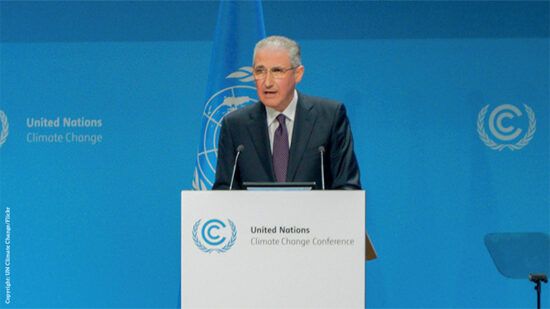Six years.
That’s how much time society has to avert the worst impacts of a warming planet. Between now and 2030, global emissions of carbon dioxide and other greenhouse gases would need to fall by 43%, science tells us.
Over that time, society would triple renewable sources of energy, double gains in energy efficiency, cut methane emissions substantially, and accelerate the transition away from fossil fuels. These are the goals that nearly 200 countries agreed to at the COP28 climate conference in December, which concluded the hottest calendar year on record.
If you work in sustainable finance like I do, you may have had family and friends ask you what these commitments mean for them as consumers, producers and savers in our economy. How might lofty policy goals that they read in the headlines inform decisions about aligning their money with their values or protecting the value of their investments?
As such questions suggest, it’s not just big investors like pension funds and sovereign wealth funds who are paying attention. The shift to a clean-energy economy shapes how investors of all sizes view opportunity and risk, not to mention the future of life on Earth.
As it happens, every investor can learn from the experience of the largest financial institutions, which allocate trillions of dollars across global capital markets and increasingly integrate climate considerations into their investment decisions. Many have publicly committed to accelerate the transition toward an economy that adds no new emissions to the atmosphere.
It’s an enormous undertaking. Annual clean-energy investment would need to more than double from its current record high to roughly $4.5trn by the early 2030s.
While a share of that capital will come from governments, much of it will come from the private sector. Institutional investors differ from you and me in their scale, but their learnings may inform how all of us approach climate investing. Here are some that I’ve shared with my circle.
A net-zero economy means the whole economy
Renewables are the easy part of the story. Risk-minded investors have learned reaching net-zero will also entail investing in industries that contribute an outsize share of the nearly 60 billion metric tons of greenhouse gas emissions that society put into the atmosphere last year.
That means providing capital to companies in industries such as steel, cement, concrete, chemicals, aviation and shipping that together contribute nearly one-third of global greenhouse gas emissions and without which the global economy cannot function. Investors have learned to identify companies in each of those industries that are leaning in, through investment and action, to decarbonisation
Better to invest than divest
Gone are the days when investors who wanted to green their portfolios sold the stocks of oil and gas companies, an act which unburdens portfolios but does little to lower emissions in the physical economy.
Starving companies of capital may not have the intended consequences. Research shows that the choice by shareholders to sell shares in companies that pollute cannot meaningfully impact the price such companies pay for capital because there simply aren’t enough impact investors as a share of investable wealth. By owning shares in pollution-intensive industries, investors can actually use their voice to influence companies’ activities and strategies.
Companies are making progress, but more action will be needed
Prodding by investors and stakeholders is one reason that one-fifth of the world’s publicly listed companies have set tanetrgets that would reduce all of their financially relevant greenhouse gas emissions to net-zero, in line with a pathway design to limit the rise in average global temperatures to 1.5°C (2.7°F). That’s up eight percentage points from a year earlier.
Still, that’s not fast enough: listed companies will burn through their share of the global carbon budget for holding warming to 1.5°C by July 2026, our Institute’s latest Net-Zero Tracker finds.
Look forward, not backward
The largest investors have learned that if they don’t know companies’ emissions, they don’t know the climate risk involved. While measuring companies’ carbon footprints can reveal their impact on the climate currently, the transition to a cleaner global economy will turn on our ability to extrapolate companies’ projected emissions from the credibility of their climate action and stated goals.
Investors – and all interested stakeholders – can increasingly expect companies to publish plans detailing how they will achieve them, how they will enlist suppliers in the effort, and how they will align their governance and lobbying to their climate goals.
Capital has a critical role to play if we hope to stop climate change, but preventing the costliest warming will mean greening the global economy much faster than business as usual. With the power of investors of all sizes targeting decarbonisation in every industry, we can drive toward a new era of sustainable growth.








